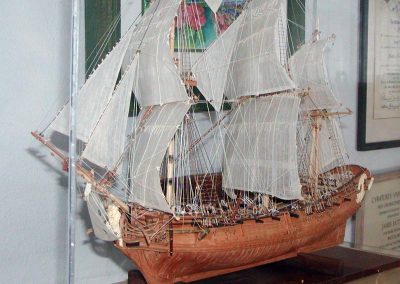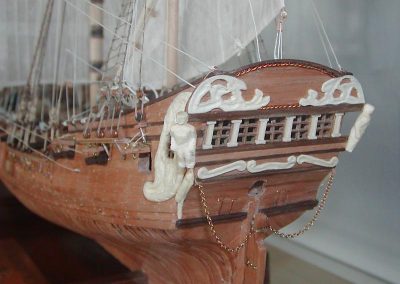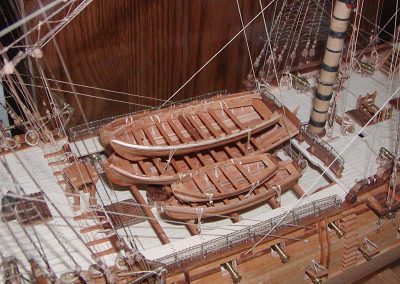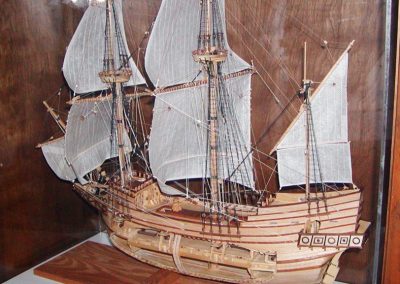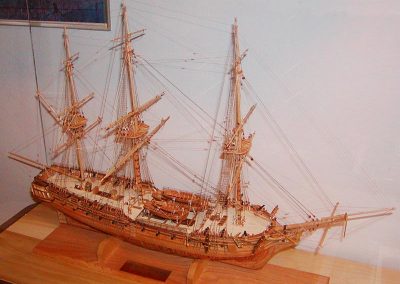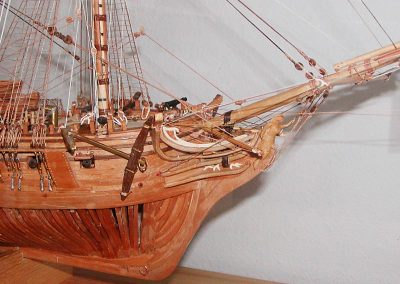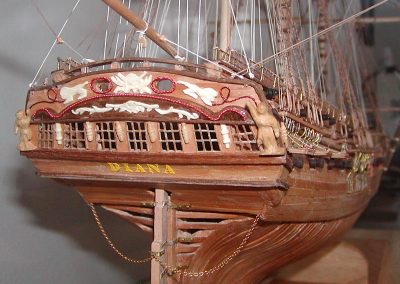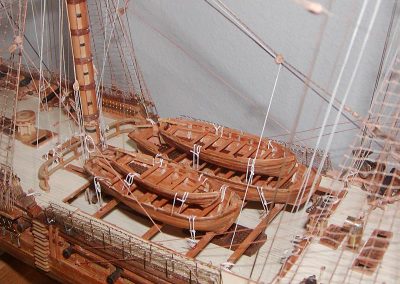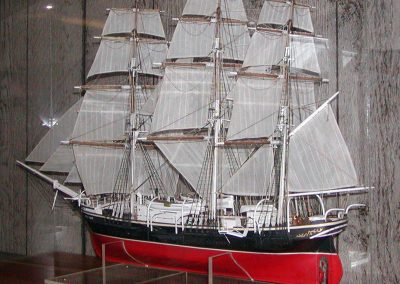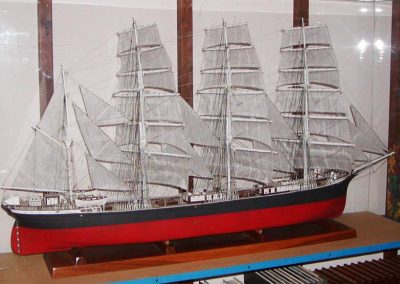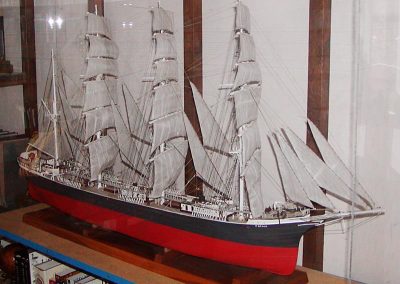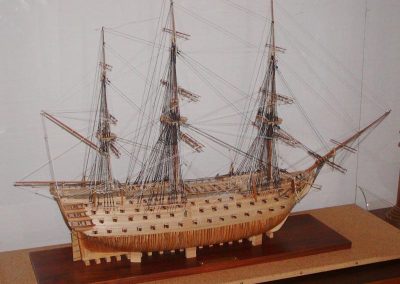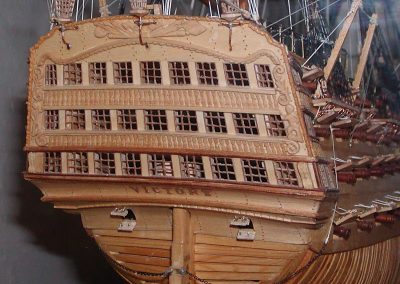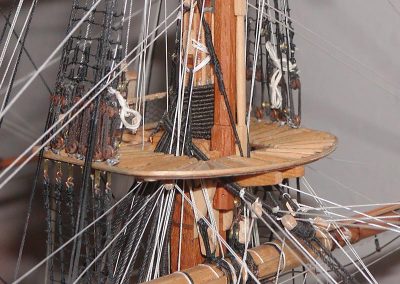HMS Blandford
One of many ships of this class, which were used for convoy escort and message dispatch. They were the forerunners of larger frigates. (1720-1739.)
Susan Constant
The flagship of the small fleet that brought the first settlers to Jamestown in 1607. Built in 1605, no one knows what eventually became of the ship. A full-scale replica was built by the state of Virginia, and sails periodically from Jamestown.
HMS Diana
Originally a British frigate, she served long and well, but in relative obscurity. (1794-1815, when she was sold to the Dutch.)
HMS Endeavour
Captain James Cook’s first ship for exploration. It was in this ship that Captain Cook discovered the Great Barrier Reef the hard way—by crashing into it! Only great seamanship skills and good fortune saved this ship and her crew.
Joseph Conrad
A training vessel of iron construction. She did a round-the-world voyage in the 1930’s, and can still be seen at the Mystic Seaport Museum in Connecticut.
Parma
This ship, built in Germany in 1902, was a long haul carrier of bulk cargo. Sadly, she was scrapped in 1936. However, a sister ship called the Peking still exists, and was purchased for restoration and display by the Hafenmuseum in Hamburg, Germany.
HMS Victory
Admiral Nelson’s flagship at the Battle of Trafalgar. Unfortunately, Admiral Nelson died in that very battle aboard this ship.
Mandalay
This 3-masted sailing ship was used as a cruise ship by Windjammer Barefoot Cruises. James’ model was presented to the captain and crew in 2004. James came to know the ship well, after having taken a cruise aboard her in 2003.

